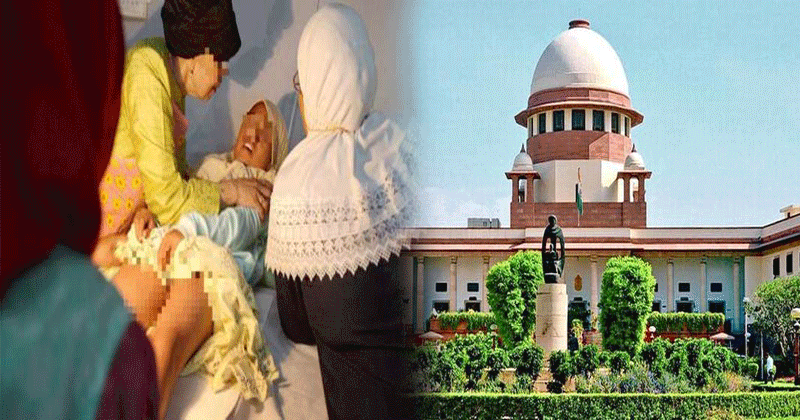
The Muslim community subject their boys to the practice of circumcision. But what is worse is that the girls go through the same practice.
In the name of religion, can anybody touch a girl’s private parts?
The Supreme Court on Monday asked how anybody can touch the genitals of females as it is the extreme private part of her body.
“Why should the bodily integrity of any child be compromised?”
The court was hearing a plea against the practice of female genital mutilation of minor girls of the Dawoodi Bohra Muslim community.
A bench of Chief Justice Dipak Misra and Justices A M Khanwilkar and D Y Chandrachud agreed to a contention made by senior advocate Indira Jaising, representing Delhi-based lawyer Sunita Tiwari that the act would tantamount to an offense under the Protection of Children from Sexual Offence Act, 2012.
“Such a religious practice is covered under Protection of Children from Sexual Offences (POCSO) Act, which makes touching the genital of a girl less than 18 years an offense,” said the bench.
Appearing for Dawoodi Bohra Women’s Association for Religious Freedom (DBWRF), lawyer Abhishek Singhvi said the religious practice of ‘khafd’ or ‘khatna’ prevalent in the community for more than a thousand years involved nipping off a minute part of the genital which was as harmless as male circumcision. This was protected by the Constitution under the fundamental right to religion and religious practices, he said.
Singhvi plowed a lone furrow as attorney general K K Venugopal said male circumcision had certain health benefits including reduction of infection from HIV. However, the AG said female genital mutilation must be banned as it had serious consequences for women. “It is a crime in the US, the UK, Australia, France and 27 African countries,” he said. Jaising said a girl child who went genital mutilation suffered from a trauma which lingered into adulthood.
READ ALSO: SHOCKING! bizarre custom to prevent sexual urges in girls
Singhvi said the issue, like triple talaq, nikah halala, and polygamy, should be referred to a five-judge constitution bench to determine the constitutional validity of the religious practice, which was an intrinsic part of Islam.
Venugopal differed and said, “Unlike male circumcision, genital mutilation on a female leads to serious vaginal and uterine complications. Moreover, the fundamental right to religion and religious practice is always subject to public health and morality.”
Attorney General K K Venugopal submitted that the rights to practice religion were subjected to the public order, the practice could lead to the high prevalence of HIV and complications in pregnancy.
Senior advocate A M Singhvi defended the practice on behalf of an organization of the community. He, however, sought to file a detailed response in the matter. The court put the matter for consideration on July 16 at 02:00 PM.
On April 20, the Centre had told the SC that female genital mutilation, prevalent among Dawoodi Bohra community in India, was already an offense under the Indian Penal Code and POCSO Act.
In response to Tiwari’s PIL last year, the SC had issued notices to four central ministries — law and justice; health and family welfare; social justice and empowerment and women and child development, and the states of Maharashtra, Gujarat, Rajasthan, and Delhi.
The petitioner had said the practice of ‘khatna’ or ‘female circumcision’ or ‘khafd’ carried out on minor girls amounted to “serious violation of the rights of children as even minors have a right of security of person, right to privacy, bodily integrity and the freedom from cruel, inhumane or degrading treatment”.
Tiwari had said that though Dawoodi Bohras were among the most educated sections of society in India, yet “it is the only Muslim community in India to practice FGM or khatna. The practice has nothing to do with religion and is more of a cultural practice”.
Tiwari had said the UN Convention on Rights of Child categorized four types of female genital mutilation, though the Bohras generally practiced Type-I FGM, which involved snipping the tip of the clitoral hood or clitoris.
“A UN resolution passed in December 2012 denouncing FGM and calling for its ban has been signed by 194 countries around the world. In Africa, 27 countries have banned the practice. Unfortunately, there is no law in India yet against FGM, hence the clergy in India is unabashedly promoting FGM,” Tiwari’s PIL had said. India is a signatory to the 2012 UNGA resolution.

Post Your Comments